Whoa! What is up with this cold? It’s February here in Ottawa and after day in, day out -20° weather Mr. One Wheel Drive said ¡ENOUGH!

I headed off for a quick trip to Cuba. I’ve traveled there a lot and am always impressed with how efficient Cubans are for getting around their cities. Due to a variety of reasons, car ownership is minimal and the majority get around by foot or by bike. When people drive, usually it is because it is necessary; most road traffic is trucks, tractors, and other motor vehicles serving a particular purpose beyond simple convenience for the driver, unlike driving to the mall (unless you call it a “convenience” to not pull ten tonnes of cargo by hand).
This picture is on a major highway (by Cuban standards). Cyclists form a critical mass on roads, so drivers are constantly aware that there might be cyclists (and pedestrians) around. These cyclists take up half the lane, and cars patiently line up behind them until there is a safe gap to pass.
In this picture I am in the middle of a lane behind a car, behind a bike, that is behind a bus. To the right a bus is stopped and people are getting on and off. On the left a moped is pulling through.
All drivers also bike to get around and have family that do so, and understand that cyclists have a right to use the road. I never saw drivers honking their horn to try and get bikes to pull off the road. While at first glance it looks downright awful, when everything is moving at biking speed, and drivers respect you, it’s not too bad.
Drivers do honk a lot, but it is to warn cyclists and pedestrians that there is a car close by, sort of a “hello, I’m here”.
The aged also get around by bike. They stay fit and independent even when their eyesight might not allow them to drive. In car-oriented suburbs we are going to have a hard time when more and more baby boomers can’t drive anymore, but their low-density design makes public transit costly and walking to get groceries impractical.
Cuban cities are 8-80 cities (places where people from 8 to 80 can get around) not by any special design, but by culture.
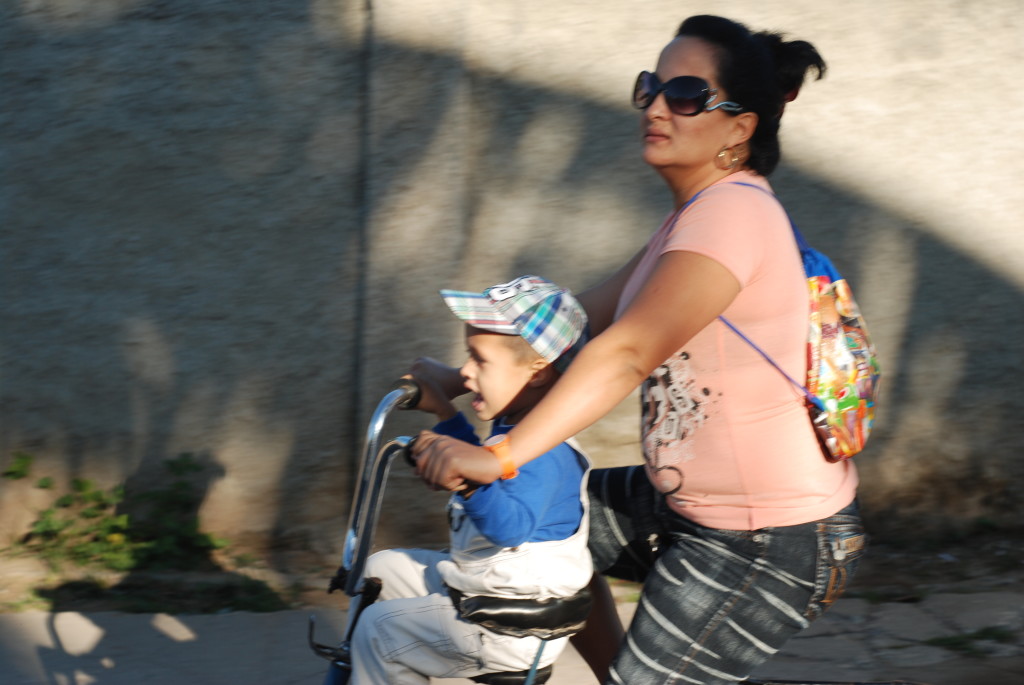
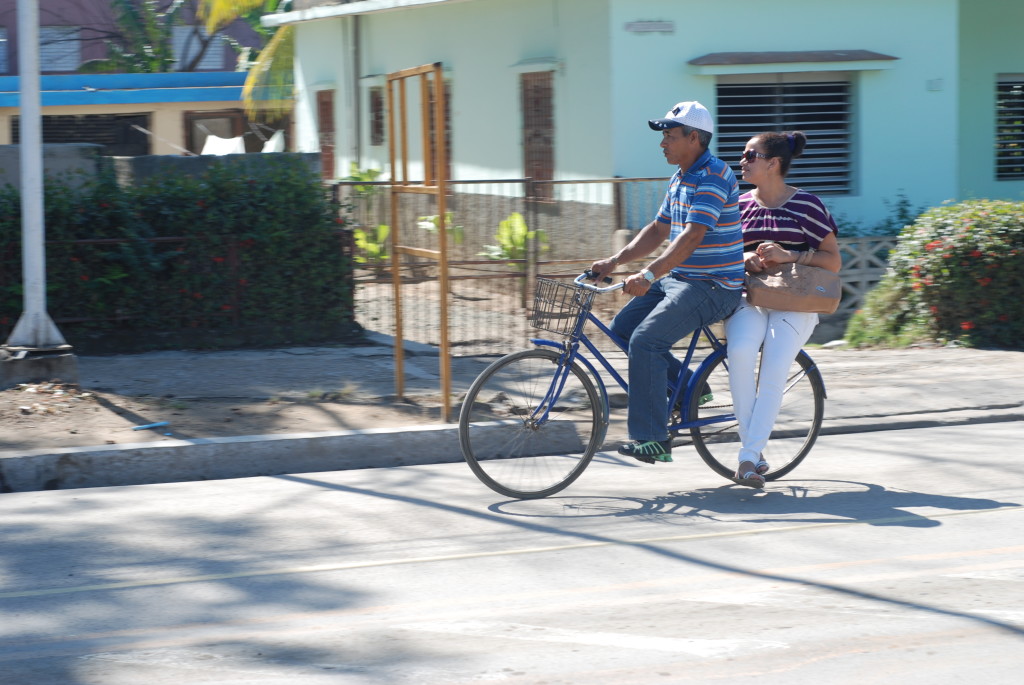
Bikes often carry two or more people. I’ve seen a bike with four people: The husband pedaling, a child on the front, and the wife on the back rack holding the youngest child in her arms.
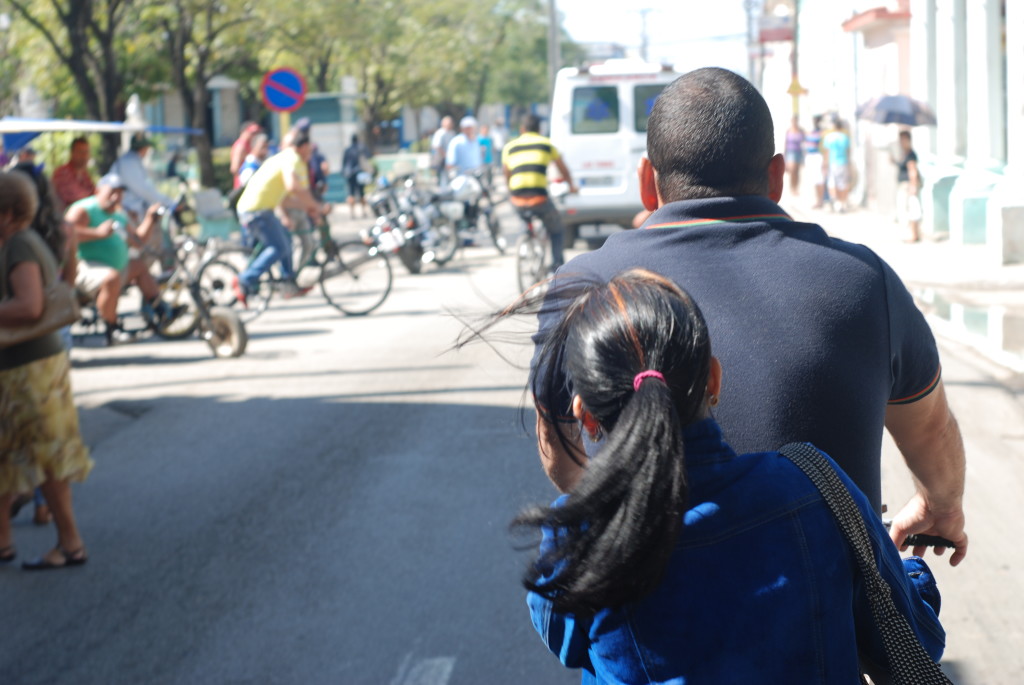
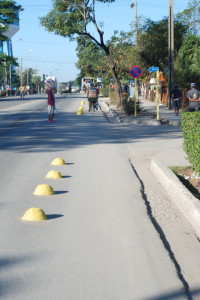 Simple concrete bumps mark out a segregated bike lane. No parking allowed anywhere along this stretch. The cyclists go in single file.
Simple concrete bumps mark out a segregated bike lane. No parking allowed anywhere along this stretch. The cyclists go in single file.
Bike taxis are quite common, along with cargo bikes.
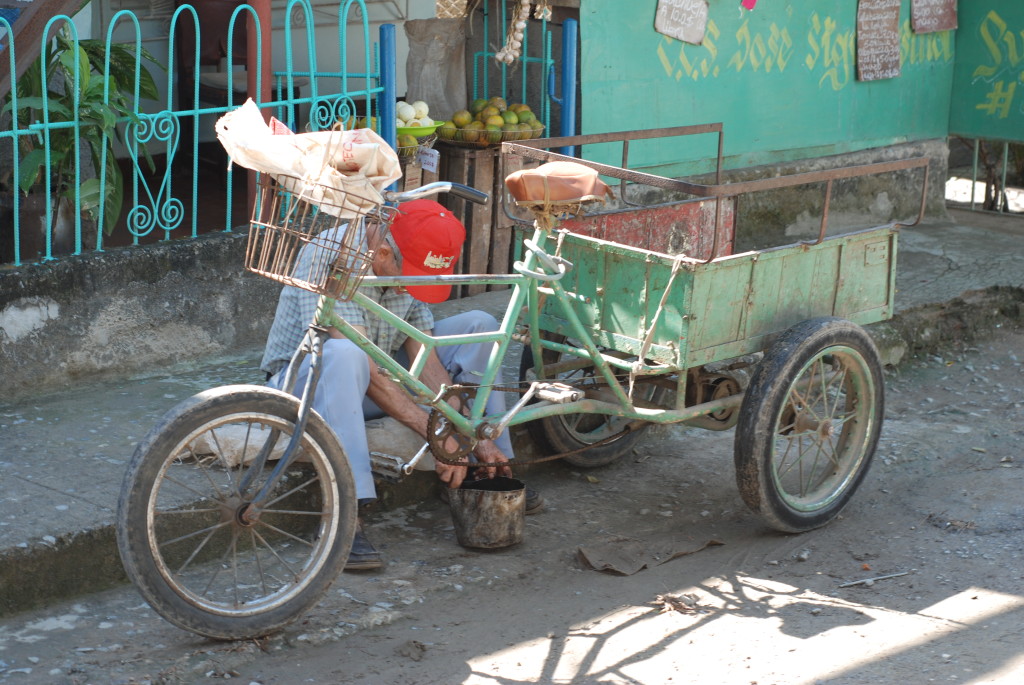
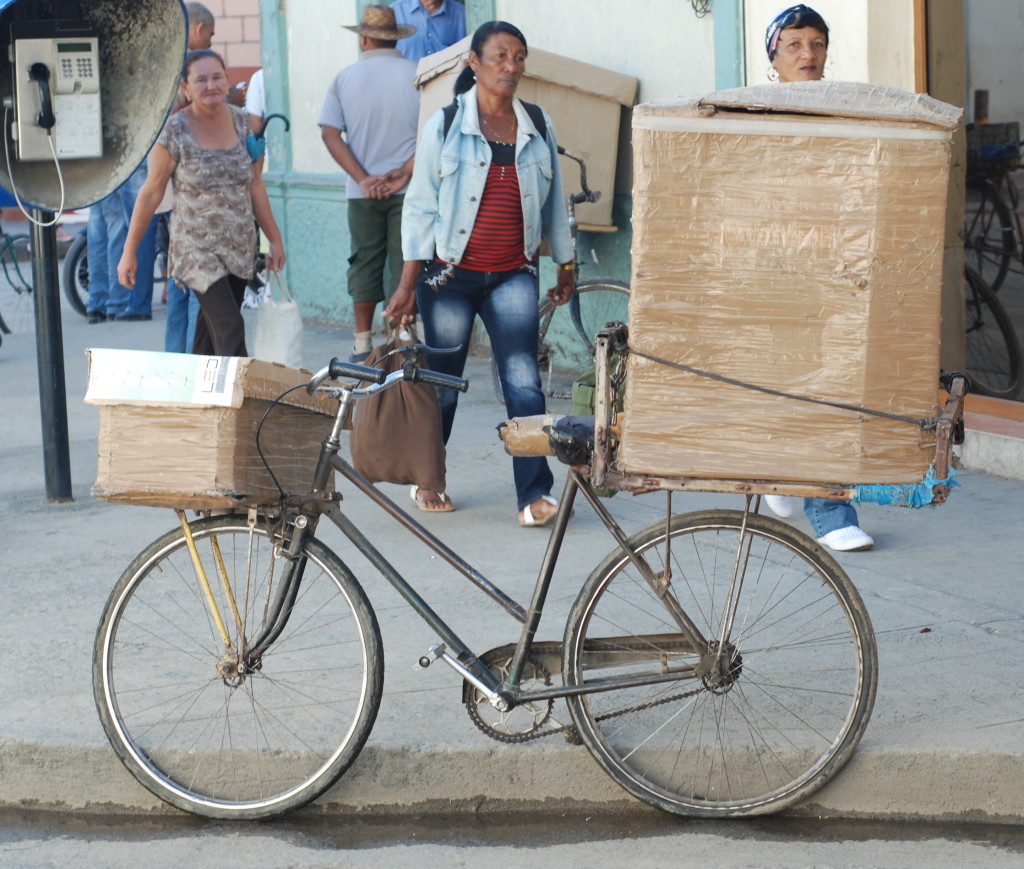
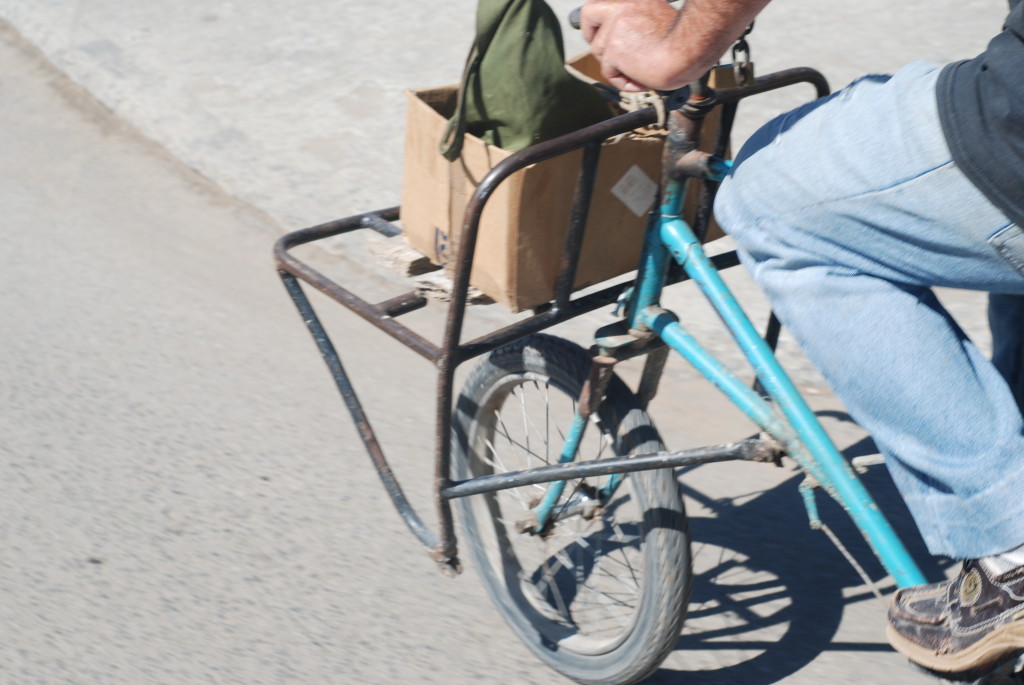
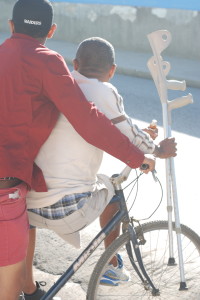
You won’t see a single bike helmet. Some bikes lack brakes. People do things that in Canada would be considered highly hazardous, like riding multiple people on a bike, balancing heavy loads, or even hanging on to the backs of trucks with one hand. But it doesn’t really matter, because the expectations of road users is so different there, and the basic idea of what roads are for is so inclusive, that accidents are prevented. On the other hand, cyclists there also act predictably, don’t punch through traffic jams, and wait for red lights.
Unfortunately, bikes are strictly banned from pedestrian streets. You can’t even walk your bike down a pedestrian street. Cars are also banned, unlike Sparks Street.
Finally, Cubans use a wide variety of transportation options. Hitchhiking between towns is common, as is standing in the back of transport trucks. One common mode of transit is by horse.
Like bus routes, horse-drawn coaches ply regular routes all day long, and for a cheap price riders can get on or off along the route. Sustainable transportation doesn’t have to be expensive, or complicated.
It’s easy to romanticize things about Cuba, but ultimately the reason why people there bike so much is that it’s the best way to get around that is accessible to them. If cars ever became affordable to the average citizen, things would undoubtedly change. But we can learn and be inspired. It shows that it’s quite possible to have a society much less car-oriented than we have here in Ottawa.
Looking at the cities from the air, it’s remarkable how, without so much space dedicated to car parking, things can be built so much more closely together, efficiently, making the need for a car much lower.
Here is the baseball stadium in Las Tunas, the city where I was:
And here is Ottawa’s, at about the same scale:
For what it’s worth, both are near the train station and the major road through the town. Las Tunas is a smaller city than Ottawa, but baseball is a much popular sport in Cuba; so maybe I should compare Havana’s baseball stadium:
With Ottawa’s hockey stadium:
“That’s not even fair,” you might say, “the hockey stadium was built out in the countryside.” Exactly.


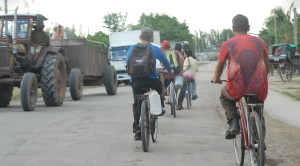
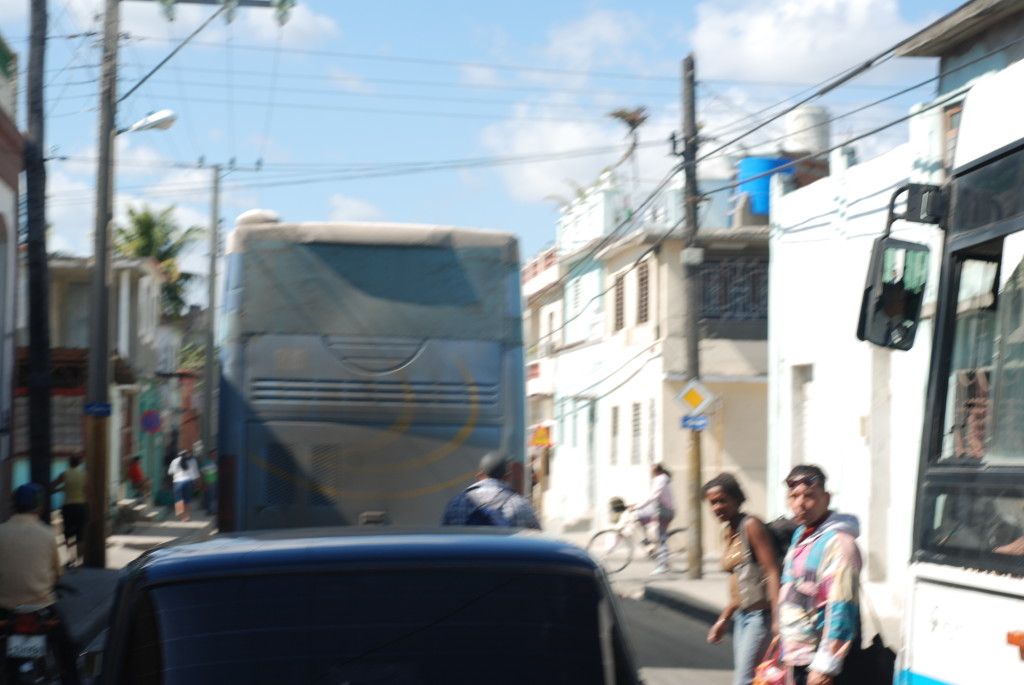
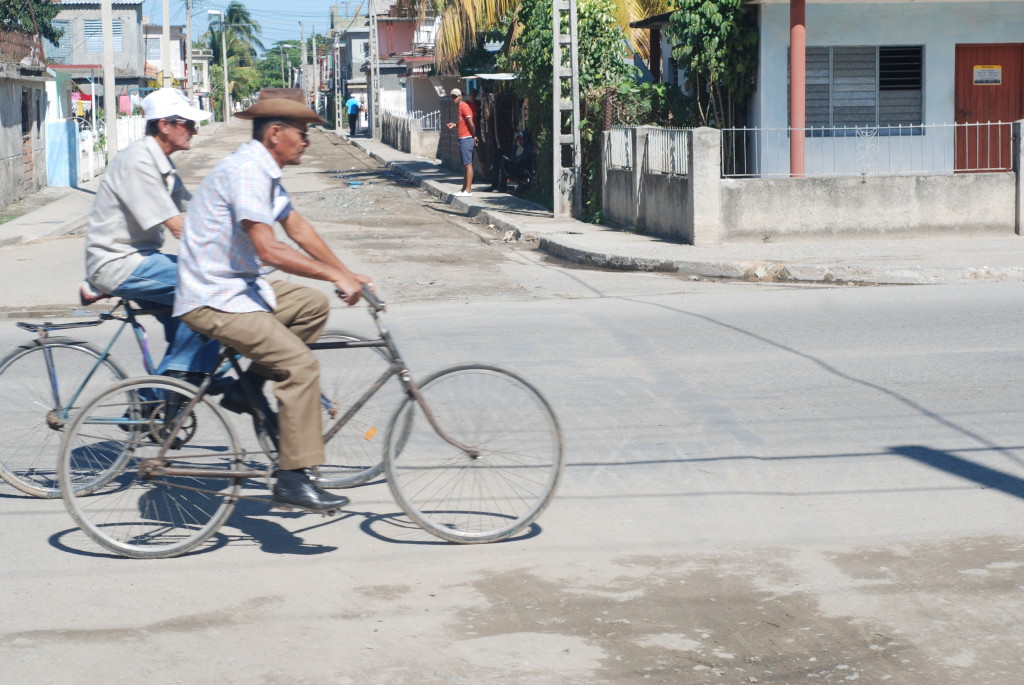
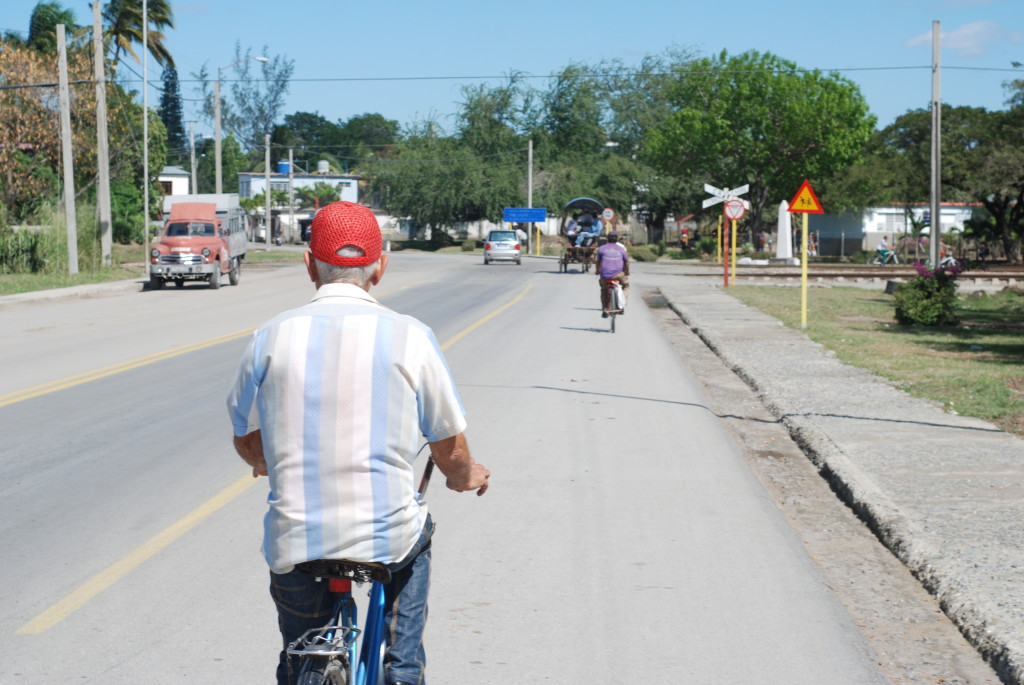

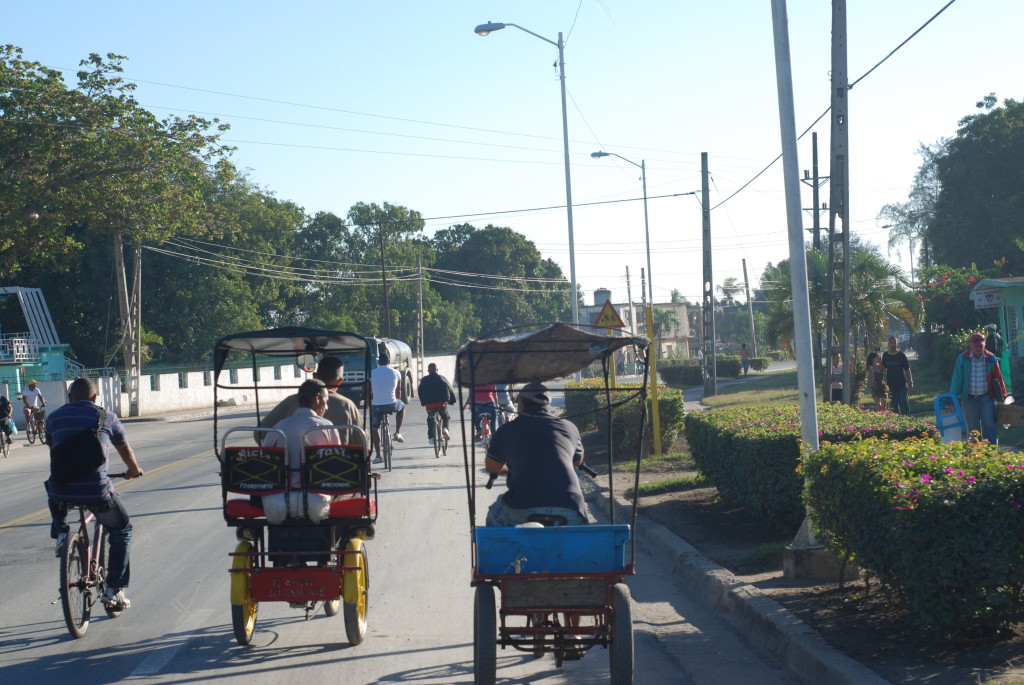
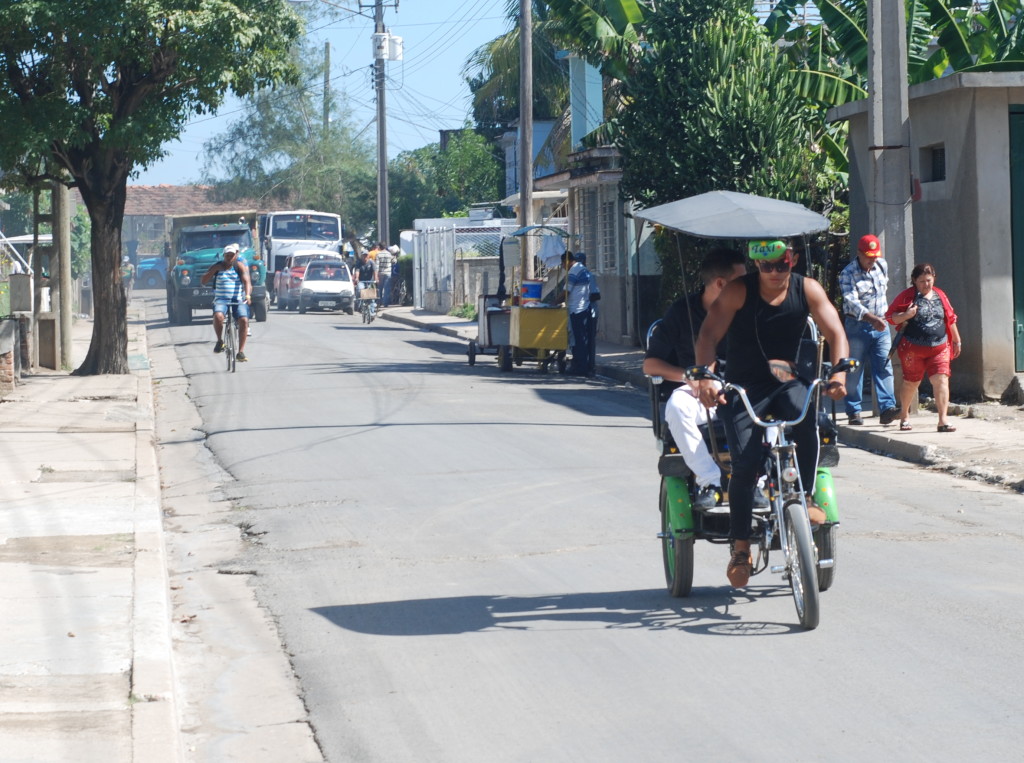
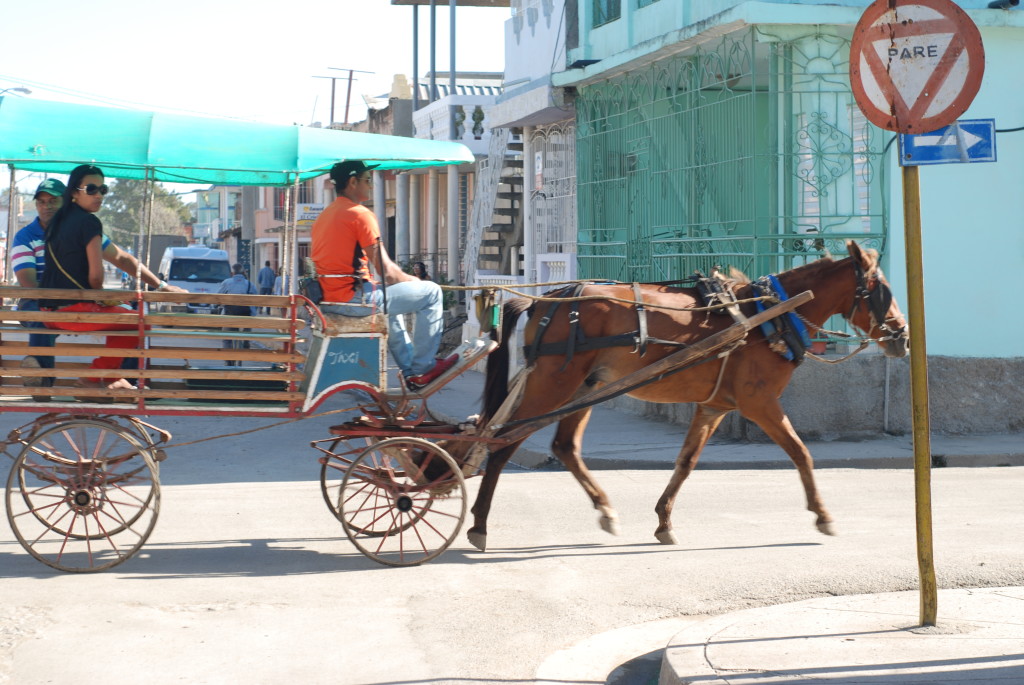
2 thoughts on “Biking in Cuba”
Thanks for the tweeted suggestion of renting a bike from a Cuban cyclist. The bike’s for rent at the hotel we stayed at were in really rough shape. How we go about it next time will depend on how we plan our next visit to Cuba. If we hang out in Havannah your original suggestion sounds good. If we plan on touring a bit I might be inclined to want to being my bike, but don’t know how complicated that would be. Don’t know if you have any advice to share. From our bus on the way in to Havannah I noticed a number of small groups who must have brought their own. They were the only riders wearing helmets.
Bikes are easy to come by in Cuba if you are willing to deal with Cubans directly. Talk to anyone on the street and they should be able to hook you up, even if you just speak English.
If you are doing serious touring then bring your own bike, but there might be a few hiccups: like if you are staying at a resort as part of a package, normally when you come out of the airport there’s a bus waiting to bring you to the resort, so you might not be able to assemble it all right away. I brought a bike once and overall it was fine, I left my bike there with my in-laws.
Finding a box to bring your bike back may not be easy if you throw out the box that you bring.
Inner tubes and spokes are easy to come by. The word “ponchera” is someone that fixes flats. A “taller de bicicletas” is a bike repairman. Harder to find is toilet paper. If you are on the road you might have a hard time finding some.
Pinar del Rio is the best area for cycling, especially the Viñales area. It is very pretty, with good hills and a lot of cyclists go there for winter training.
Bike tourism in Cuba definitely exists, there are organized tours.
It’s common for people to park their bikes at a “parqueo de bicicletas” which is a supervised bike parking. Pay 1 peso and someone will watch over your bike, since most Cubans don’t own bike locks.
Enjoy! It’s a great place to go riding, since the culture is so used to it.